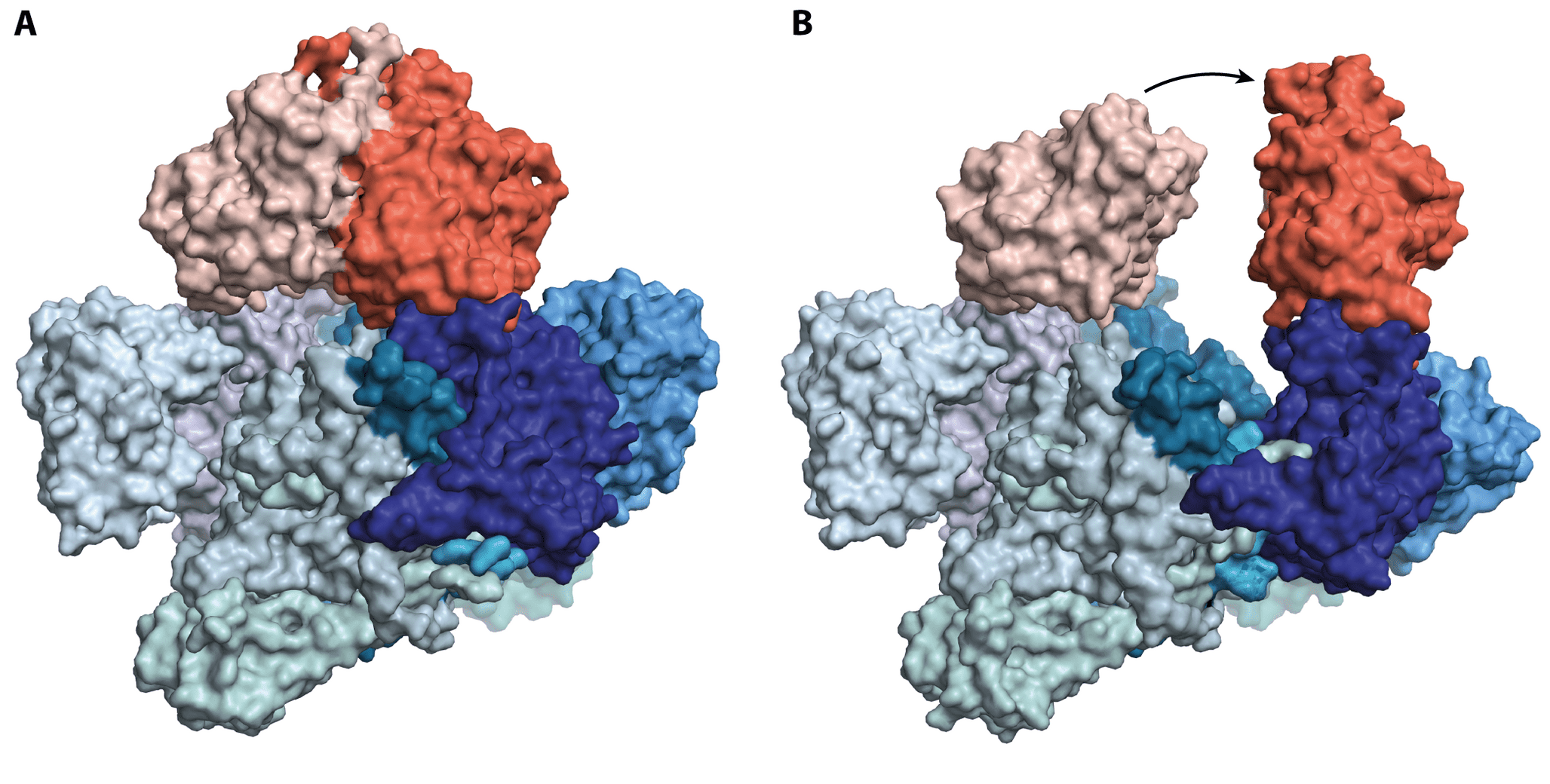
Aarhus University researchers made a significant breakthrough in understanding the complex process of phosphonate breakdown in bacteria, with potential applications in pesticide breakdown and environmental protection. The team led by Søren Kirk Amstrup, a former PhD student, studied the C-P lyase enzyme in E. coli bacteria, which allows microbes to degrade highly stable chemicals, such as phosphonates found in agricultural pesticides like RoundUp™️ and certain antibiotics.
By rapidly freezing purified samples of the enzyme, the research team succeeded in capturing the C-P lyase enzyme in two different states, representing an open and closed form. The results show that E. coli bacteria utilise cellular energy from ATP to both open and close the enzyme, acting as a molecular nutcracker. These new insights into bacterial enzymes that break down persistent phosphonates could bring us closer to developing more efficient and environmentally safe methods of breaking down pesticide residues, as well as understanding microbial processes across ecosystems.
Addressing the problem of pesticide contamination
Phosphonates are considered “forever chemicals” due to their highly stable nature, as they can inhibit enzymes that stop plant growth or bacterial infections. Once used, they can become difficult to eliminate, resulting in widespread contamination. For example, PFAS, a group of more than 9,000 man-made chemicals, is found in places such as heat-resistant coatings (including Teflon), toilet paper, and wastewater treatment systems. The growing concern about the environmental and health impact of these pollutants makes understanding how bacterial C-P lyase enzymes can degrade them an urgent priority.
Research findings could lead to the development of bacterial strains capable of surviving by breaking down these challenging-to-degrade substances. This would not only make strides in reducing environmental pollution but also significantly impact the future use of pesticides in agriculture, ensuring a safe living environment for both farmers and residents of affected areas.
Exploring further applications beyond pesticide breakdown
The discovery of the C-P lyase enzyme’s mechanism has implications beyond pesticide contamination, potentially informing the development of novel strategies for bacteria survival under nutritional stress. Having a deeper understanding of the molecular mechanisms involved in this enzymatic process can inspire new biotechnological solutions for waste management and environmental bioremediation. The knowledge gained about the breakdown of phosphonate compounds could give scientists an innovative tool for both understanding and mitigating the effects of these persistent contaminants.
In conclusion, the researchers at Aarhus University have made significant progress in understanding the mechanism underlying the C-P lyase enzyme, including its role in phosphonate breakdown. The discovery of this enzyme paves the way for groundbreaking applications in combating environmental pollution from pesticide residues and improving agricultural practices, as well as addressing bacteria survival challenges under stressful conditions.








